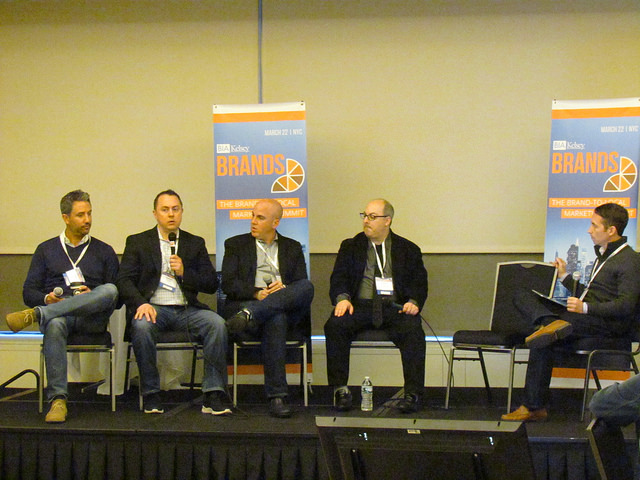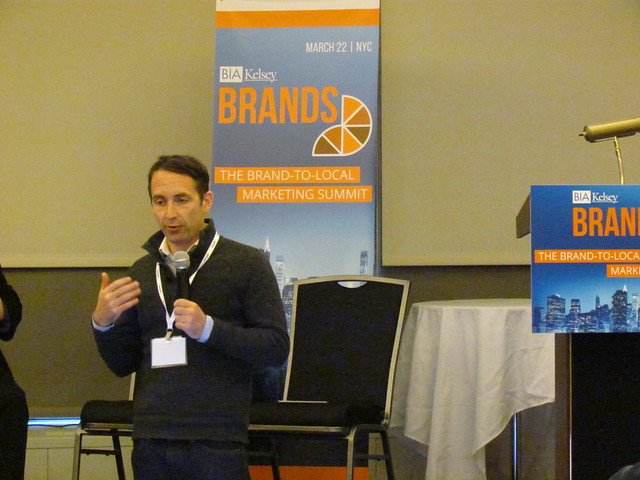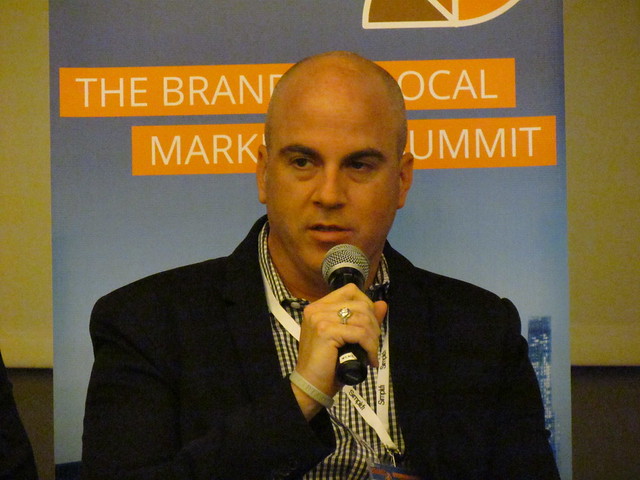
Location targeted mobile marketing is growing in adoption and excitement among brands. But… most continue to measure the wrong things. This was one of many takeaways from the mobile marketing session at BIA/Kelsey Brands.
There’s not only an anecdotal rise in the excitement levels around location targeting, but BIA/Kelsey pegs total “brand-to-local” ad spend at $61 billion in the U.S.. That’s within the $147 billion spent on local advertising in total.
But like any emerging media — even though mobile is past the emergent phase — analytics, KPIs and campaign objectives are lazily inherited from legacy media. This is something I called out in 2009, but is still somehow happening.
Bull by the Horns
So what is an appropriate metric for location based mobile ad targeting? It varies per advertiser, but the common KPI should be actual conversions that mobile devices can capture (such as foot traffic) instead of proxy measures like clicks.
“Clickthrough rate is a bulls#*t metric,” said xAd head of platform, Dan Hight. “Traditionally that’s what agencies look at. But now it’s about a place in the real world: How do you get people to my store, and how to measure that?”
xAd has backed up this claim for years by measuring “secondary actions” such as mapping, phone calls and other things that get closer to actual conversions. It took this a step further (literally) with it’s Footprints offline tracking tool.
Footprints led to Blueprints which was the basis for xAd’s most recent announcement, MarketPlace. It’s a self serve ad tool that brings the concept of search keyword bidding to real world places and consumer groups (blog post forthcoming).
“We believe that where you actually go in the real world is a much better predictor of intent that just searching for something,” Hight said. “You’re actually doing something, not planning how to do it.”
Inside Job
Another way that metrics are getting closer to the transaction is going beyond the threshold of the storefront. There we’re seeing things like beacons and indoor mapping track and attribute what I like to call the last mile to the cash register.
Aisle 411’s Nathan Pettyjohn demonstrated the centimeter-level accuracy for tracking foot patterns in stores. Through a heatmap-like interface, retailers can attribute sales and optimize shelf space by examining shopper “dwell times.”
And of course beacons can track that last mile. But resident beacon expert and GeoMarketing managing editor David Kaplan echoed my past rant by warning that beacons have lots of opt-in friction… so the value exchange better be good.
Lots of retailers have greedily used beacons to push in-store ads, but it should be more of a shopper utility to get product information or help from store associates. Shoppers won’t jump through all those opt-in hoops just to get ads…
And much like Dan Hight’s lesson on using physical world behavior to profile audiences, Kaplan argues that beacons should be used more to listen. That way they can be a powerful retargeting tool, analogous to online retargeting.
Package Deal
This all becomes a matter of education and acclimation for national brands. So what are best practices for tech companies helping them get there? The first step is to find the right internal champion.
“If someone at corporate has a ‘local’ in their title, it’s a good sign for us,” said LocalID founder and CEO Alex Nocifera. “It means they’re putting structure around disciplines and agility and all these things around local.”
But most of all, a holistic approach should be taken by brands and retailers who want to succeed with Location-relevant marketing. That should be viewed as a package deal that maps to all of the parts of the shopper’s path to purchase.
“If you just do product search mapping in a store, yeah that’s kind of interesting,” said Pettyjohn. “If you add a loyalty program, that’s kind of interesting. If you have offers in your mobile app, that’s kind of interesting. But if you combine it all together, and ask ‘who were these people?’ ‘What drove them into the store?’ ‘Where did they go?’ and ‘What did they buy?’ That’s when it gets really interesting.”






This Post Has 0 Comments